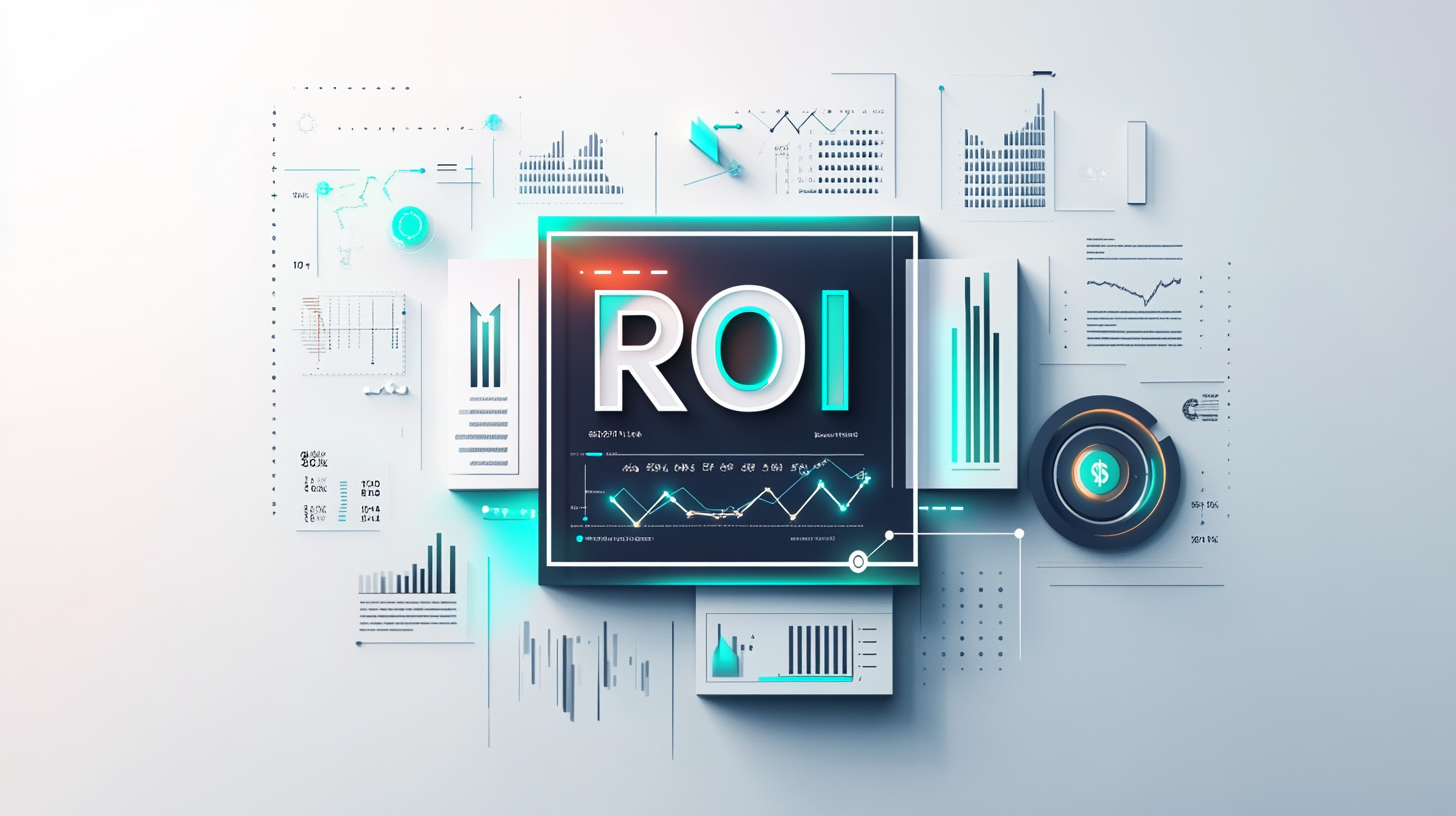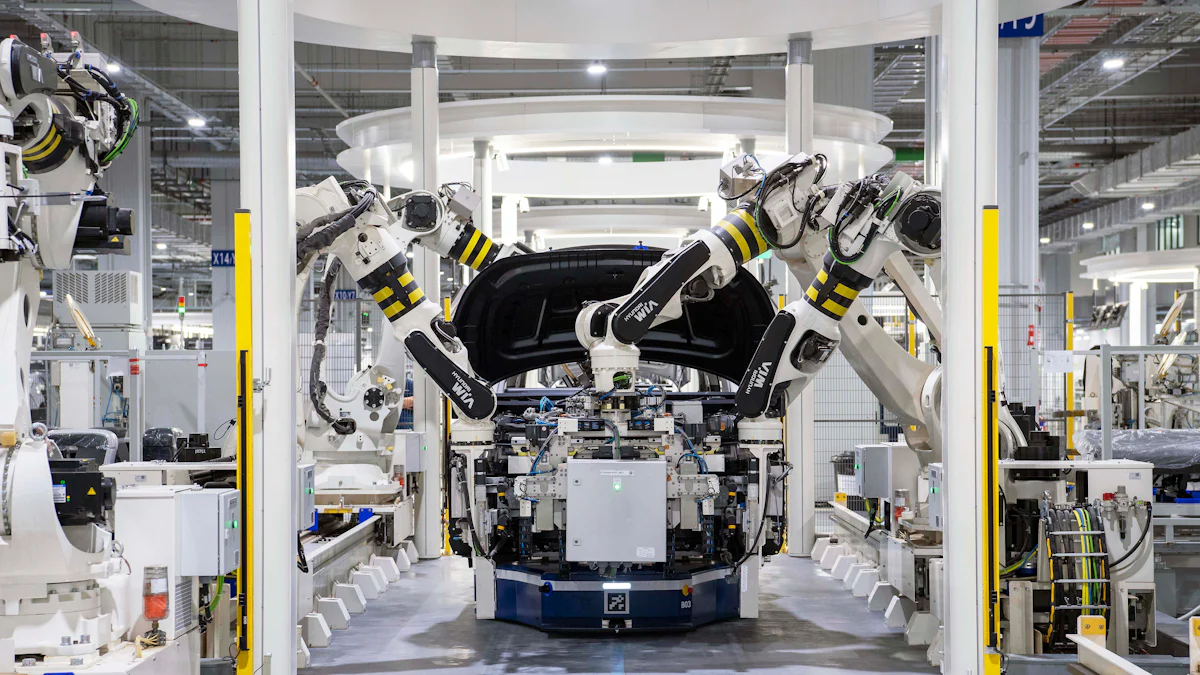
Return on investment (ROI) of automated visual inspection serves as a critical metric for evaluating the financial viability of these systems. A positive ROI not only justifies the investment but also highlights potential cost savings, quality enhancements, and competitive advantages. With the market for automated visual inspection systems projected to grow from $16.69 billion in 2024 to $19.04 billion in 2025, businesses must calculate the ROI accurately. Understanding costs, benefits, and data collection and tracking processes ensures informed decision-making. However, challenges like measuring intangible benefits or delayed financial gains can complicate ROI assessments. Machine vision solutions simplify this process by automating inspections and improving tracking efficiency, ultimately enhancing the ROI of automated visual inspection.
Key Takeaways
-
Knowing costs is very important. Find starting costs, regular expenses, and hidden fees to understand how automated visual inspection systems affect money.
-
Automated systems lower worker costs and make products better. They work all the time, reduce mistakes, and find defects faster.
-
Use the ROI formula to check money benefits. Compare the money saved from automation to the project costs to decide wisely.
Identifying Costs for Automated Visual Inspection Systems

Understanding the costs of automated visual inspection systems is essential for conducting an accurate cost-benefit analysis. These costs can be categorized into upfront investments, ongoing operational expenses, and hidden costs. By identifying these factors, you can better evaluate how these systems help reduce costs and improve efficiency.
Upfront Costs
The initial investment includes purchasing hardware, software licenses, and any additional infrastructure. Installation and integration expenses cover setup and configuration within your existing processes. Training costs ensure your team can operate and maintain the system effectively.
|
Cost Category |
Description |
|---|---|
|
Initial Investment |
The cost of purchasing automated vision system hardware, software licenses, and any additional infrastructure needed. |
|
Installation and Integration |
Expenses for setup, configuration, and integration into existing manufacturing processes. |
|
Training &Service |
Costs for training personnel to operate and maintain the automated vision system effectively and aftersales service. |
Ongoing and Hidden Costs
Operational costs include maintenance, software updates, and technical support. Hidden costs, such as regular calibration and troubleshooting, may arise to maintain system accuracy. These factors often go unnoticed but significantly impact your overall cost-benefit analysis.
-
Significant upfront investment for acquiring and implementing automated systems.
-
Regular maintenance and software updates to ensure reliability.
By thoroughly analyzing these costs, you can make informed decisions about adopting automated visual inspection systems. This approach ensures you maximize ROI while minimizing unnecessary expenses.
Quantifying the Benefits of Automated Visual Inspection

Labor Cost Savings In Labor Wage
Automated visual inspection systems significantly reduce labor costs by minimizing the need for manual inspections. These systems operate continuously without fatigue, eliminating the inefficiencies associated with human error. For example, industries such as manufacturing and electronics have reported annual labor savings of $691,200 per production line. The table below highlights potential savings:
|
Savings Type |
Amount |
|---|---|
|
Weekly Savings per Line |
$352,620 |
|
Annual Savings per Line |
$18,336,240 |
|
Labor Savings |
$691,200 annually |
By reallocating skilled workers to more critical tasks, you can further enhance operational efficiency and reduce the costs of poor quality.
Improved Quality and Decrease Defect Escapes
Automated systems ensure consistent performance, maintaining uniform quality standards across all inspected items. They detect minor defects that manual inspections might miss, leading to improved quality and fewer defective products reaching consumers. Early defect identification minimizes rework and waste, reducing production costs. Additionally, real-time defect detection allows for immediate corrective actions, helping you meet production deadlines while maintaining high standards.
Increased OEE (Overall Equipment Effectiveness)
Automated visual inspection systems accelerate the inspection process, enabling faster defect detection and higher throughput. By identifying issues early, you can reduce production delays and improve operational efficiency. These systems also enhance product consistency, which contributes to lower production costs and waste.
Waste Reduction and Compliance Advantages
Automation reduces waste by catching defects early in the production process. This ensures compliance with industry standards and regulatory requirements. For example, AI-based systems provide real-time insights, helping you maintain quality while minimizing material waste. The table below illustrates the environmental impact:
|
Benefit |
Environmental Impact |
|---|---|
|
Reduction in Production Costs |
Enhances product quality, leading to less waste. |
|
Decreased Waste |
Reduces material wasted on defective products. |
By adopting automated systems, you contribute to a more sustainable manufacturing process.
Comparison of the Benefits and Stating the Highest ROI
Among the benefits, improved quality and defect reduction often yield the highest ROI of automated visual inspection systems. Detecting minor defects early reduces waste, enhances product consistency, and improves brand reputation. These factors, combined with labor cost savings and increased productivity, make automated systems a valuable investment for your cost-benefit analysis.
ROI Calculation for Automated Visual Inspection Systems
ROI Formula and Explanation
To calculate the ROI of automated visual inspection systems, you need to understand the standard formula. ROI is the ratio of financial gain or loss from an investment relative to its cost. For automated systems, the formula uses “financial value” and “project cost” instead of traditional terms like “current value” and “cost”. The formula is as follows:
ROI (%) = [(Financial Value - Project Cost) / Project Cost] × 100
ROI Example Calculation
-
Investment: Installation and training costs total $100,000.
-
Labor Savings: Eliminating 2 manual inspectors at $50,000/year results in $100,000/year savings.
-
OEE Gains: Improved OEE saves 5,000 minutes/year, with production valued at $5/minute, yielding $25,000/year.
-
Defect Escape Reduction: Fewer defect escapes reduce costs by $50,000/year.
Total Annual Returns (R): R=100,000+25,000+50,000=175,000
ROI Calculation: ROI (%)=(175,000−100,000)/100,000)×100=75%
*the integration cost is not calculated, it will depend on the exact manufacturing senarios.
Financial value represents the benefits derived from automation, such as labor savings, defect reduction, and increased throughput. Project cost includes all expenses, from initial investments to ongoing maintenance. This formula provides a clear framework for conducting a cost-benefit analysis and determining the payback period of your investment.This example highlights the significant return on investment automated systems can deliver. By reducing labor costs and improving yield, the manufacturer achieves a rapid payback period and long-term profitability.
CONTACT US !
get free consulting and evaluation of your project ROI!
Adjusting ROI for Industry-Specific Factors
Tailoring ROI calculations to your industry ensures accuracy. Key factors include:
|
Factor |
Description |
|---|---|
|
Scale of Implementation |
Larger deployments may yield greater benefits but incur higher initial costs. |
|
Inspection Speed |
Faster inspection enhances throughput and cost savings in high-volume industries. |
|
Labor Costs |
Higher labor costs amplify savings from automation. |
|
Quality Improvement |
Enhanced quality reduces defects, boosting customer loyalty and retention. |
|
Industry and Regulatory Compliance |
Meeting strict standards minimizes risks and improves ROI. |
You can refine your calculations by segmenting costs and revenues, adjusting for time periods, and accounting for risks. Tools like financial modeling software simplify this process, enabling precise cost-benefit analysis tailored to your operational needs.
UnitX’s AI powered vision system help to improve the ROI of automated inspection
UnitX’s AI-powered vision systems redefine the standards of automated inspection by delivering best accuracy and efficient deployment. The company’s flagship technologies, OptiX and CorteX, enhance defect detection rates, significantly reducing scrap and improving yield. OptiX minimizes reflectivity, ensuring better visibility of defects, while CorteX, trained specifically on machining flaws, achieves superior detection accuracy. Advanced lighting designs further enable the identification of even the smallest imperfections, casting shadows to highlight hidden defects. These innovations not only improve product quality but also lower costs associated with customer complaints and recalls.
Real-world applications of UnitX’s AI-powered systems demonstrate their effectiveness. For instance, an automotive supplier used the technology to inspect aluminum parts for structural defects. This implementation replaced error-prone manual inspections, resulting in a net benefit of $1,354,000 annually due to improved yield and reduced defect-related costs. By adopting UnitX’s solutions, you can achieve similar results, maximizing ROI while ensuring consistent quality and operational efficiency.
Calculating the ROI of automated visual inspection systems involves identifying costs, quantifying benefits, and tailoring calculations to your industry. Long-term benefits include labor savings, enhanced productivity, and quality improvements. Real-time inspections prevent bottlenecks, while data-driven decisions optimize resource allocation. By adopting automation, you ensure operational efficiency and sustainable growth in competitive markets.
See Also
Enhancing Quality Control in Manufacturing Through AI Innovations
Perfecting OD Scratch Inspections With Advanced Machine Vision
The Ultimate Guide to Machine Vision in Industrial Automation
Utilizing Machine Vision Technology in Food Production Processes
UnitX OptiX: Revolutionizing the Inspection Process in Industry









